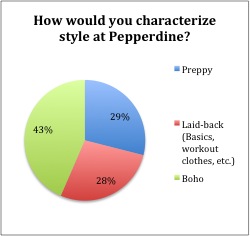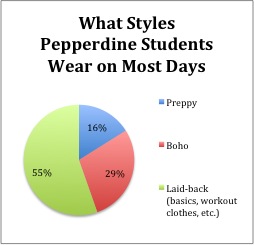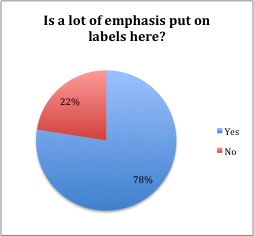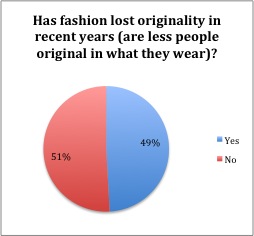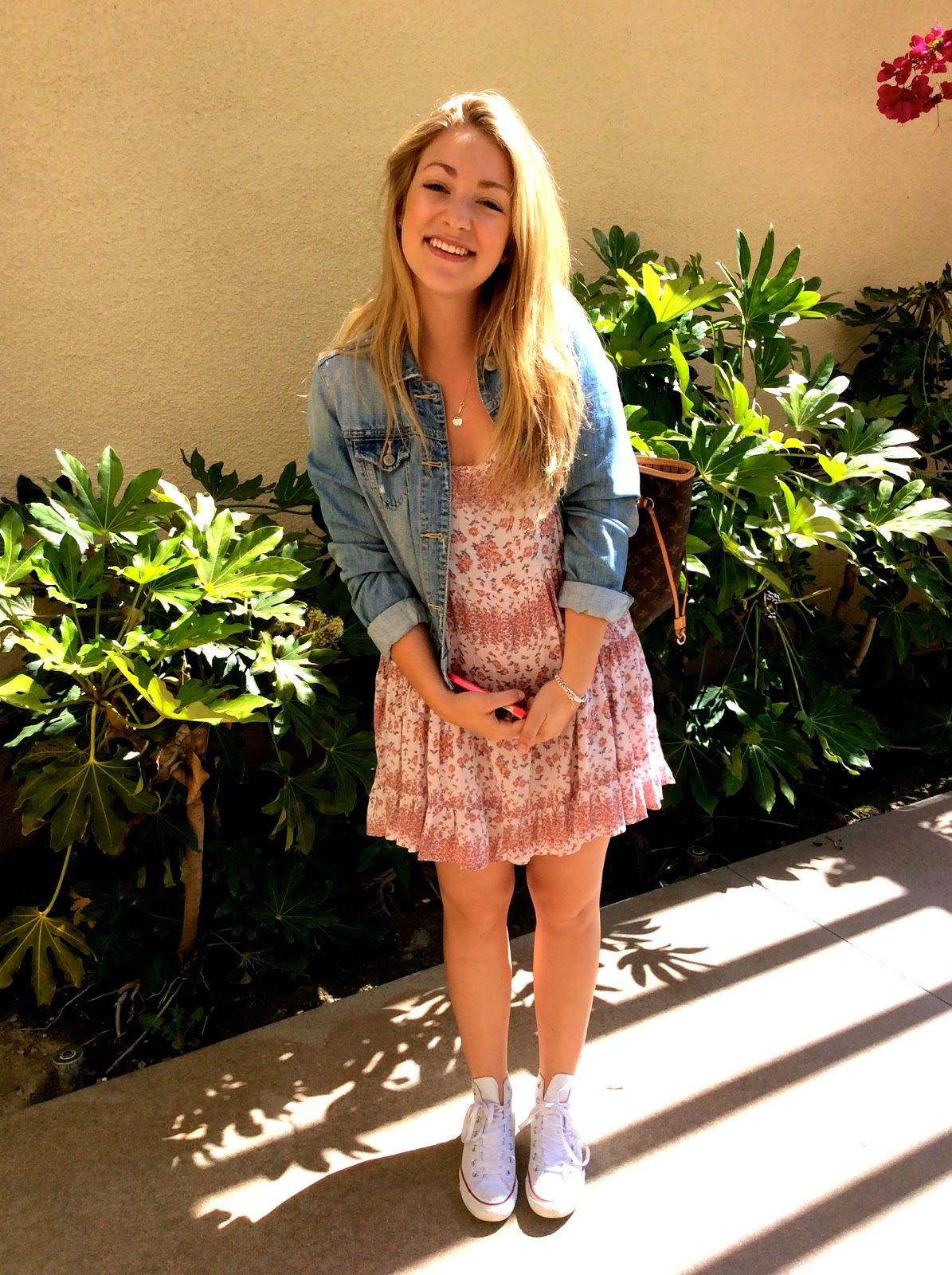
A short and flowing printed dress with a long, beaded necklace and strappy sandals – such an outfit, may – at first glance – radiate independence and individuality.
But on a normal day in Malibu, 45 percent of Pepperdine females might be wearing the same thing.
Fashion allows self-expression but some people worry that style is losing the originality and uniqueness it once held, as people follow trends and pursue big labels for the status they bestow.
“I think that everyone wants to be different and thinks they’re being different,” Kendall McLeod, 18, a freshman business administration major, said. “But in the end it’s all kind of morphing into one collective style.”
Moreover, in the quest for individuality some might lose what they are trying to find.
A spring Graphic survey of 58 students found that the majority of people buy big-name labels to enhance their image and reputation by owning something that costs a lot of money. Essentially, they use their purchases as status symbols.
According to the survey, 78 percent of respondents feel that a large emphasis is put on labels here at Pepperdine while only 22 percent disagree.
The survey also found that students fall into three main style trends: bohemian, such as flowing and printed clothes, preppy, such as button-downs, blazers and high-waist skirts, or laid-back, such as workout attire and basics. Bohemian is the most popular at 43 percent with preppy and laid-back nearly tied.
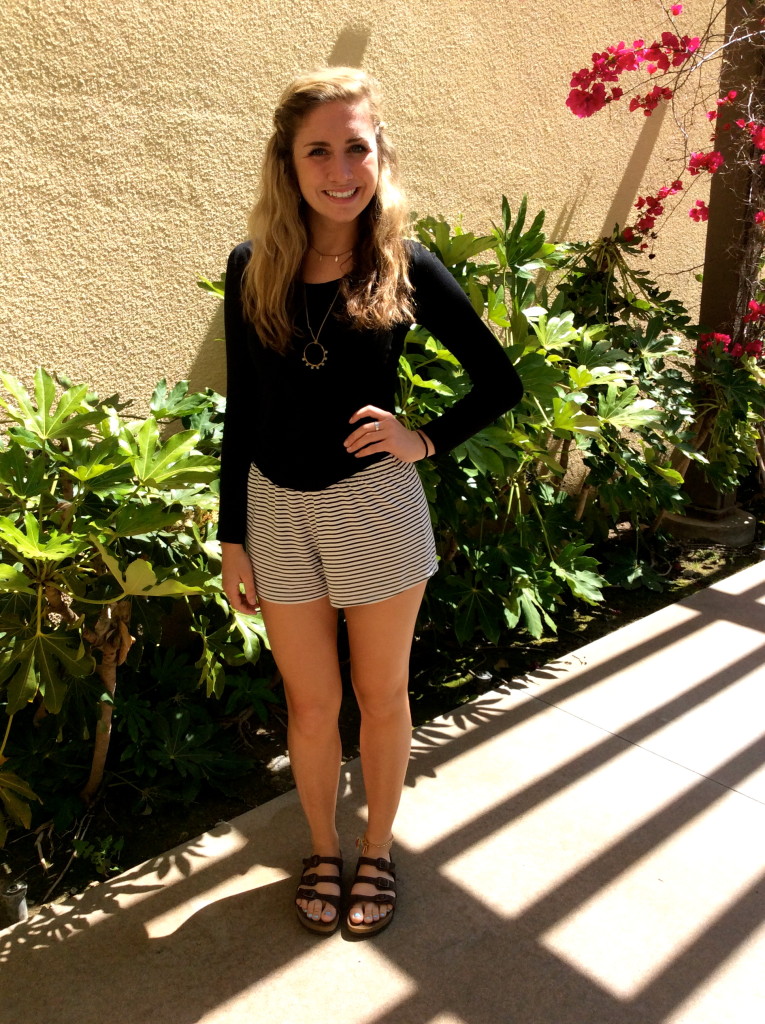
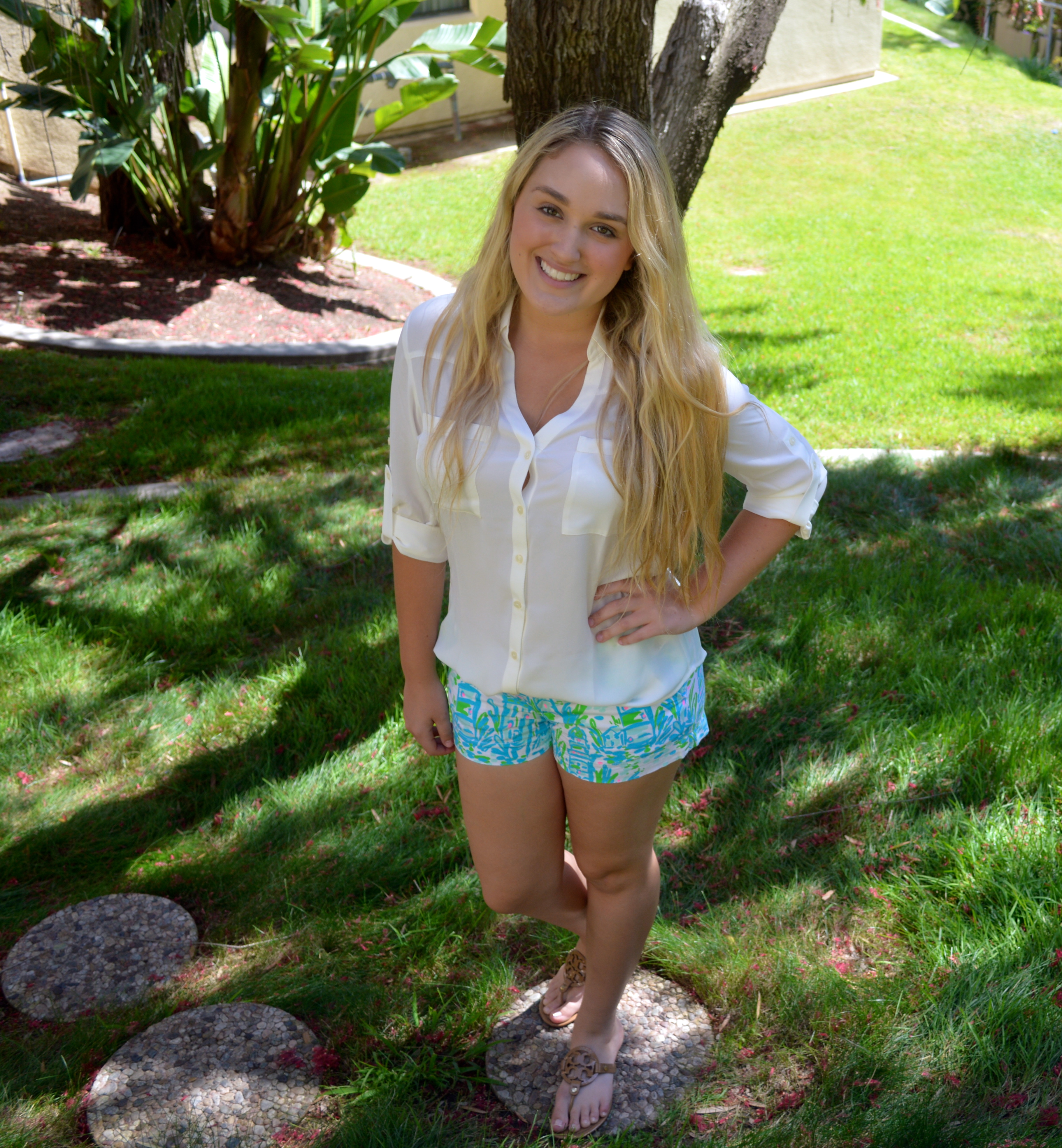
However, when asked which style each respondent wears the most, 55 percent said laid-back, 28 percent said Bohemian and 16 percent said preppy.
Multiple students said that on some days Pepperdine is like the runway at fashion week while others characterize it as very casual with a lot of people wearing workout attire. Students agreed, however, that big labels are abundant.
“I feel like people sometimes buy expensive things for their image and reputation,” Sarah Welbaum, 19, a freshman public relations major, said. “But also to make themselves feel good because everyone always looks so put-together here, so it’s a bonus to be carrying around a designer bag or wearing designer shoes.
With attendance costs at more than $60,000 per year and Los Angeles a city over, fashion matters to many.
“I heard a girl say yesterday that for graduation, she’d rather have a Birkin than a car,” said Victoria Stanzione, 21, a senior political science and intercultural communications major, referencing the designer purse.
It’s this mentality and obsession with wealth that suggests people may not be buying their clothes simply to wear but moreover to impress.
“I don’t think labels are necessarily a priority,” said Shayla Girardin, 20, a junior journalism major. “But I think it’s more prominent because this is an affluent school and people are so fashionable.”
People may buy expensive labels as a safety blanket to ensure that others know they are of higher class.
“An item that shows status can help you gain a little confidence in situations where you’re not sure you belong,” John Sampson, 20, a sophomore advertising major, said. “Southern California is image-obsessed and walking in with a bag or shirt or piece of jewelry that shows that you belong in the status quo is a time-honored tradition.”
Some may seek the quality of big brands, but quality is not always a given, students said.
“Sometimes the expensive labels are better quality,” Nelson said. “But then some clothing is just really overpriced for not much so why would you buy it other than to show you have wealth?”
Outsiders said the pursuit of trends and big labels go way beyond Pepperdine.
“People here like to wear what magazines show them,” Leo Cacau, 24, a Brazilian native, who lives in Venice and works at Chili Beans Santa Monica, said. “They’re copycats. Everyone is wearing the same things, having the same haircuts, and everything is just the same.”
Cacau said style isn’t changing. It’s just recycling the old and bringing it back. Everyone wants to buy the new thing, but what they don’t realize is it’s not new at all.
“People wear the trends and go with what’s cool,” Melodi Meadows, 24, a model working at Free People in Santa Monica, said. “It (fashion) is really an art form, but people nowadays don’t take the time to make it that.”
It’s the struggle between trying to be original and trying not to be too unique in a world where everybody wants to fit in.
“I think today’s fashion is so eclectic that people don’t conform to one specific trend,” Ally Washburn, 19, a Pepperdine freshman international business major, said.
Some gawked at the suggestion that there is no originality to their carefully planned outfits.
“I think it’s still possible to push the envelope of fashion just by choosing outfits that don’t fit what’s popular at that time,” McLeod said. “And that’s what’s revolutionary about an outfit. Not that it’s never been seen before.”
Fashion is huge in major cities, Girardin said, and with Malibu being a suburb of Los Angeles, there is pressure to be trendy. But if everyone is striving to be trendy with the same styles, they lose the individuality that fashion should provide.
People in the fashion industry and students agree that individual fashion is dictated more by location and surroundings than anything else.
“Whatever section of LA you go to has its own style,” Rogier Bolleurs, 54, a sales associate at Hugo Boss in Santa Monica, said. “Fashion comes and goes, but style is always there.”
Stanzione said that outside the Pepperdine bubble, Malibu has a style of its own that centers on the basics.
“The style in Malibu is very bohemian and almost even homeless,” Stanzione said, “…You look at (people in Malibu) and you can’t tell what’s in their wallet by what they’re wearing.”
Handbags, on the other hand, are a different story altogether.
“In Malibu, everyone has Celine,” Stanzione said. “I see a lot of Hermes and Birkins, too. And Louis Vuitton of course, but that’s not particular to Malibu.”
However, many of those attending the university on scholarship or financial aid could care less about donning big labels to class.
“The amount of money you have doesn’t define you,” Haley Smith, 18, a theater and media production major, said. “And it shouldn’t define your style either.”
Lyle Nelson, 18, a freshman international business major, said that a lot of people he talks to get their clothes from thrift stores and that the label doesn’t make the outfit.
“The clothes at thrift stores tell stories,” said Smith. “You can alter them and make them your own. Thrift stores are more affordable, less wasteful, and they tap into your creativity a bit, which helps bring out an individualized sense of style.”
So maybe that’s originality. Creating something new out of something that already exists.
Shannon Hansen completed this story in Dr. Christina Littlefield’s spring 2015 Jour 241 class.

